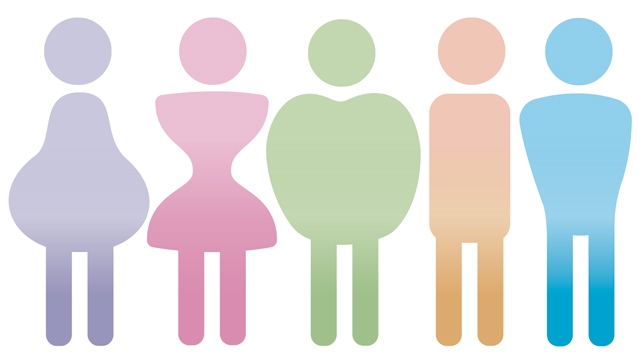Every day, Americans are inundated with approximately 4,000 media messages. Many of the messages target our kids with distorted ideas about how they should look and act. Kids of all ages and adults often perceive messages and images on social media as authentic, rather than taking into account that many of these photos have been filtered, digitally altered, or worse, completely distorted. According to Common Sense Media, children and adolescents can spend more than four hours per day on screens. We know this ongoing media exposure can play a role in how young people see themselves and perceive their worth.
Exploring the connections between negative body image, disordered eating, and eating disorders
Apart from social media, family dynamics, stress, trauma, and other compounding factors contribute to the development of negative body image, disordered eating, and eating disorders. Media messaging – especially with regard to weight and shape – portray ideas and expectations of beauty and self-worth that are often distorted and unrealistic.
Connecting all of these factors, it’s important to have an awareness of the signs and symptoms of eating disorders for parents, physicians, teachers, and coaches to ensure early intervention. Seeking the right professional treatment at the right time may interrupt the eating disorder symptoms before one is impacted nutritionally, cognitively, emotionally, and medically.
Here are some potential risk factors that may contribute to the onset of an eating disorder or disordered eating in children and adolescents:
• Perfectionist’s temperament
• Worry over others’ perceptions
• History of anxiety, depression, or obsessive-compulsive behaviors
• Participation in a sport or activity that emphasizes weight or body judgment
• Low self-esteem
• Family dysfunction
• Difficulties in managing and expressing feelings
• Lack of coping skills to regulate difficult and uncomfortable emotions
• Poor boundaries, i.e., limits and boundaries are not respected or validated
• Obsession with dieting
• Peer influence
• Victim of teasing or bullying
• Genetic predisposition – girls with a mother, grandmother, aunt, or other female relative who previously had an eating disorder are more likely to develop eating disorders
A closer look at body image, eating disorders, and family life
No family is immune to the challenges of disordered eating. Eating disorders affect all ages, genders, races, ethnicities, socioeconomic groups, and sexual orientations.
Families need to take these health challenges seriously from an early age. The average age of onset for an eating disorder is twelve years of age. Eating disorders are lethal. Many people are unaware that eating disorders have one of the highest mortality rates of any mental illness. Often, persons suffering from an eating disorder are misdiagnosed and seek treatment for medical consequences rather than the eating disorder itself. Because full recovery is possible, diagnosis and treatment at the right level of care as close to the age of onset as possible is critical.
While we cannot shield our children from the world and the negative messages in it, we can create a home environment that supports expression of emotions, body diversity, and positive body image that can be generalized outside of the home.
Here are nine strategies to use at home with the family:
1. Be aware of your own body image concerns. Remember, you are a role model. Your children or other children with whom you interact might emulate the way you talk about your own appearance, weight, or body type. Try to talk about the positive things your body can do for you.
2. Monitor conversation at mealtime. Refrain from food, weight, shape, and diet talk. Instead, use this time to talk about your child’s day. Make mealtime a family event all family members look forward to.
3. Be mindful of how you talk about food and nutrition in your house. Refrain from talking about food in black and white terms, i.e., good food versus bad food, healthy versus unhealthy. In your household, embrace a culture that includes all foods. The foods you eat are not representative of who you are as a person.
4. Focus on what is important. Take time to talk about what is important to you as a family, including your values.
5. Be mindful of how you compliment your child and others. Subtle comments and messages can reinforce negative body image and disordered eating, especially in children who already have a sensitive temperament. Praise your children for their accomplishments and positive character traits. This sends your children positive messages about their abilities versus appearance.
6. Be a critical viewer of the media. When certain commercials cross your screens, use this as an opportunity to point out to your child ways the commercial might contribute to a negative sense of self. Help children understand that what they might see on social media, on television, or in magazines is not representative of real life.
7. Celebrate diversity of body types. Assist your child in understanding that body types are very different and people come in all shapes and sizes.
8. Encourage your children to participate in physical activities that are fun and do not emphasize weight or shape.
9. Encourage your children to discuss their feelings and create an environment in which it is safe to do so. Children who have difficulties with emotional expression often use eating disorder behaviors or disordered eating to regulate emotions.
It is never too late to begin to assist your children and adolescents with accepting their bodies and developing a positive body image. As parents, we need to commit to creating a culture that’s accepting for all body shapes and sizes.




